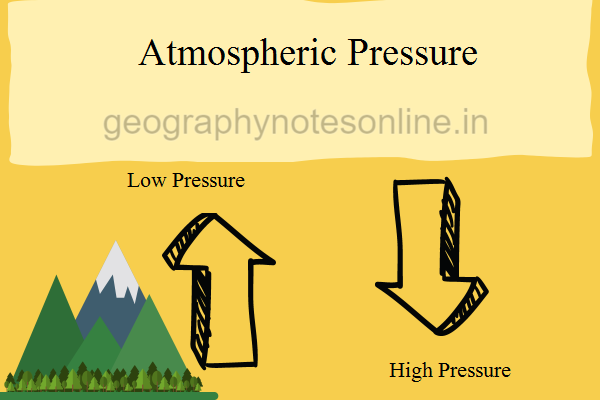Atmospheric Pressure

Atmospheric Pressure. The weight exerted by all the layers of the atmosphere on a unit area at a place is called air pressure. The atmosphere on the surface of the earth exerts air pressure due to the force of gravity.
Measurement of air pressure
Measurement of air pressure– Air pressure is measured by barometer (fortrin or aneroid). The unit of measurement of air pressure is millibar or hectopascal. The prevailing unit in India is millibar. 1 millibar is equal to one gram weight on 1 square cm.
A rapid fall in the barometric reading indicates the onset of a storm. A rapid steady rise in the reading is an indication of clear weather or an anticyclonic condition. The distribution of air pressure is shown by isobars.
Isobars are lines formed by joining places of equal air pressure on the sea level. In this the effect of altitude on air pressure is removed. The distance between two equal pressure lines is called the air pressure gradient / barometric gradient.
Atmospheric Pressure | Distribution of Air Pressure
Atmospheric Pressure. There are two types of distribution of air pressure –
Vertical Distribution – Generally the air pressure decreases with increase in altitude. There is a decrease of one millibar for every 10 meters of altitude. At an altitude of 6 km, the air pressure remains almost half. Filled gases are found in the lower layers of the atmosphere and the force of gravity is more.
Horizontal Distribution – A total of 7 air pressure belts are found on the earth. The equatorial low pressure belt and the polar high pressure belt are thermogenic, while the 30-35 degree belt subtropical high pressure belt and the subpolar low pressure belt at 60-65 degree are kinetic.
Latitude 30-35 is called horse latitude because in ancient times horses were sometimes thrown into the sea for easy navigation of boats carrying horses.